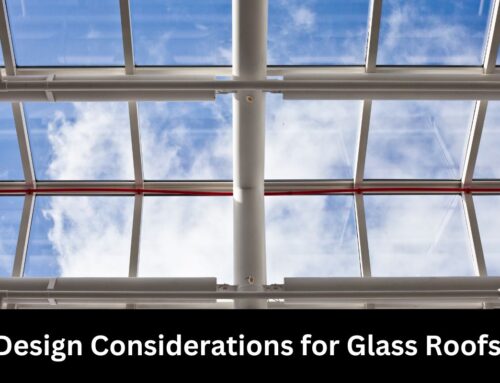Table of Contents
Glass roofs have been utilized in public buildings across centuries, offering not only aesthetic appeal but also practical benefits like natural light and energy efficiency. From train stations and shopping centers to exhibition halls and libraries, glass roofs bring a unique element to the architectural design of public buildings. This article explores the use of glass roofs in various types of public buildings.

Glass Roofs in Train Stations
Historically, train stations have been one of the most common types of public buildings to feature glass roofs. These structures required large, open spaces to accommodate trains and passengers, and glass roofs offered a solution that provided shelter while allowing natural light to flood the interiors.
One of the most iconic examples is the Saint Pancras Station in London, with its impressive single-span iron and glass roof. Another example is the Gare de Lyon in Paris, where the glass roof illuminates the station with soft, natural light, creating a sense of openness and grandeur.
Exhibition Halls and Museums
Exhibition halls and museums are another type of public building where glass roofs have been effectively used. The main aim in these buildings is to create spaces where art or exhibits can be viewed in the best possible light. The use of glass roofs allows for controlled natural light to enter, enhancing the viewer’s experience.
The Grand Palais in Paris and the British Museum’s Great Court in London, featuring a stunning tessellated glass roof, are excellent examples of this application. In these spaces, the glass roof is not just a structural element but also contributes significantly to the aesthetic experience.
Shopping Centers
In recent years, shopping centers have also begun to incorporate glass roofs in their designs. They offer a way to bring the outdoors in, creating a more enjoyable shopping experience. The Galleria Vittorio Emanuele II in Milan, with its impressive glass-vaulted arcades, demonstrates the potential of glass roofs to create bright and inviting commercial spaces.
Libraries and Educational Buildings
Libraries and other educational buildings often use glass roofs to create well-lit, conducive environments for study and research. The glass roof of the British Library in London is a notable example, bathing the interior in natural light and creating a pleasant ambiance for reading and study.
Conclusion
From train stations and exhibition halls to shopping centers and libraries, glass roofs have found diverse applications in the design of public buildings. They serve functional requirements while enhancing the aesthetic experience of these spaces. With their ability to admit natural light and create dramatic architectural expressions, glass roofs continue to be a popular choice in public building design.
Majestic Glass: Leading the Way in Glass Roofing Excellence
Elevate your property’s appeal with Majestic Glass, Sydney’s premier choice for high-quality glass roof services. Our dedicated team prides itself on delivering exceptional craftsmanship using the finest materials. We offer a variety of glass types, designed to fit your specific needs and budget. With our wealth of experience, we provide expert advice on design and installation to ensure a glass roof that combines aesthetic beauty with structural strength and weather resistance. Choose Majestic Glass, where we go beyond offering a service; we guarantee a seamless installation process and provide peace of mind.
Frequently Asked Questions on The Use of Glass Roofs in Public Buildings: From Train Stations to Exhibition Halls
-
Why are glass roofs commonly used in train stations?
Glass roofs are commonly used in train stations because they provide shelter while allowing natural light to fill the interiors. This creates a sense of openness and grandeur in these large, public spaces. Examples include the Saint Pancras Station in London and the Gare de Lyon in Paris.
-
How do glass roofs enhance the experience of exhibition halls and museums?
Glass roofs in exhibition halls and museums allow for controlled natural light to enter, enhancing the viewing experience of the exhibits. They also contribute to the aesthetic appeal of these spaces. The Grand Palais in Paris and the British Museum’s Great Court in London are notable examples.
-
Why are shopping centers incorporating glass roofs in their designs?
Shopping centers are incorporating glass roofs in their designs to create a more enjoyable shopping experience. Glass roofs bring the outdoors in, making commercial spaces bright and inviting. The Galleria Vittorio Emanuele II in Milan is an example of a shopping center with an impressive glass roof.
-
What are the benefits of using glass roofs in libraries and educational buildings?
In libraries and educational buildings, glass roofs create well-lit, conducive environments for study and research. They allow ample natural light to enter, creating a pleasant ambiance for reading and learning. A notable example is the British Library in London.
-
Are there any challenges or considerations when designing a public building with a glass roof?
Designing a public building with a glass roof comes with several considerations. These include ensuring the structure can support the weight of the glass, managing the thermal gain and loss due to the transparency of the material, and addressing issues related to glare and the potential for bird collisions. As such, it requires careful planning and design.
Related Articles
The Role of Glass Roof Architecture in the Development of Modernism: Transparency and Lightness





